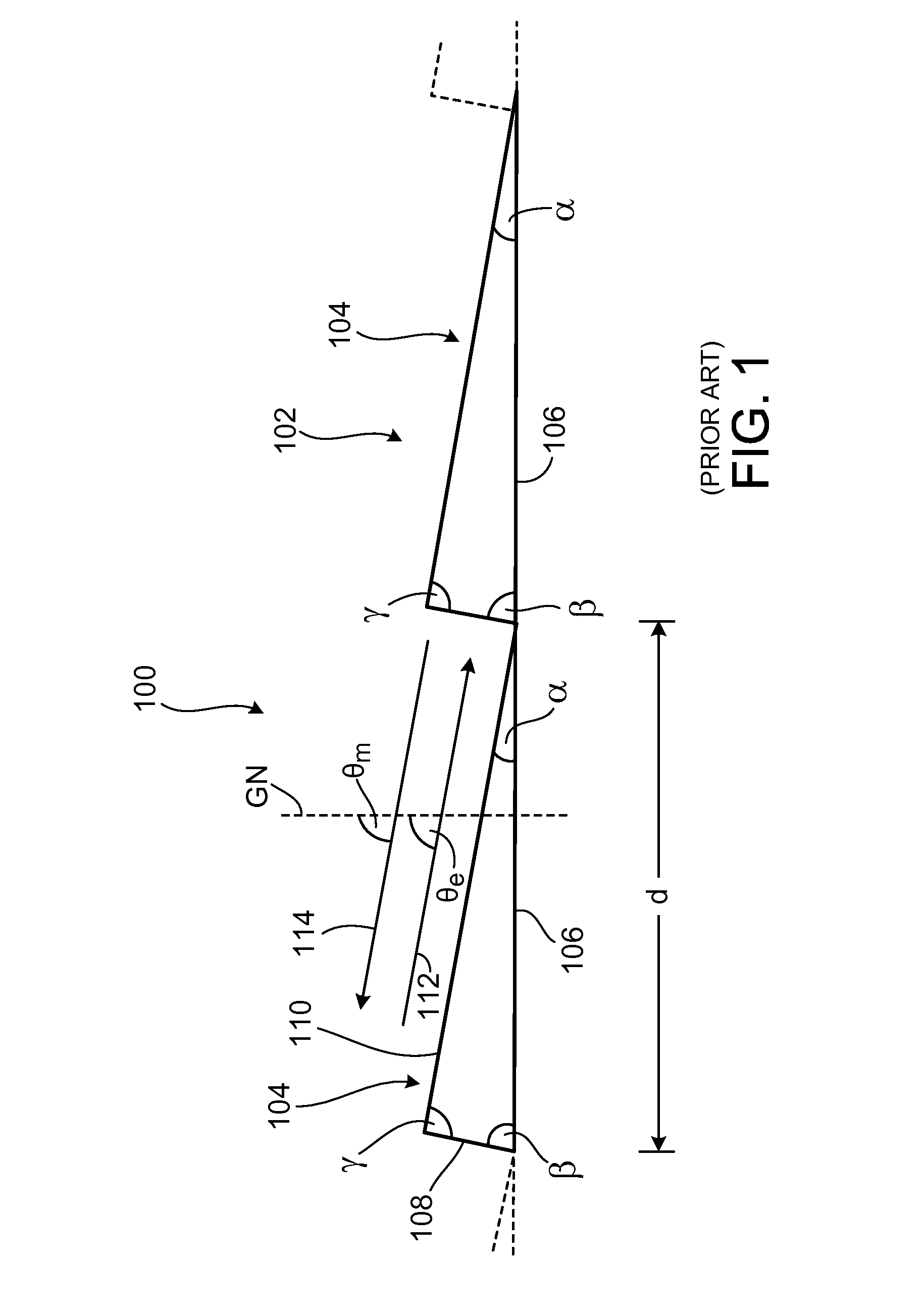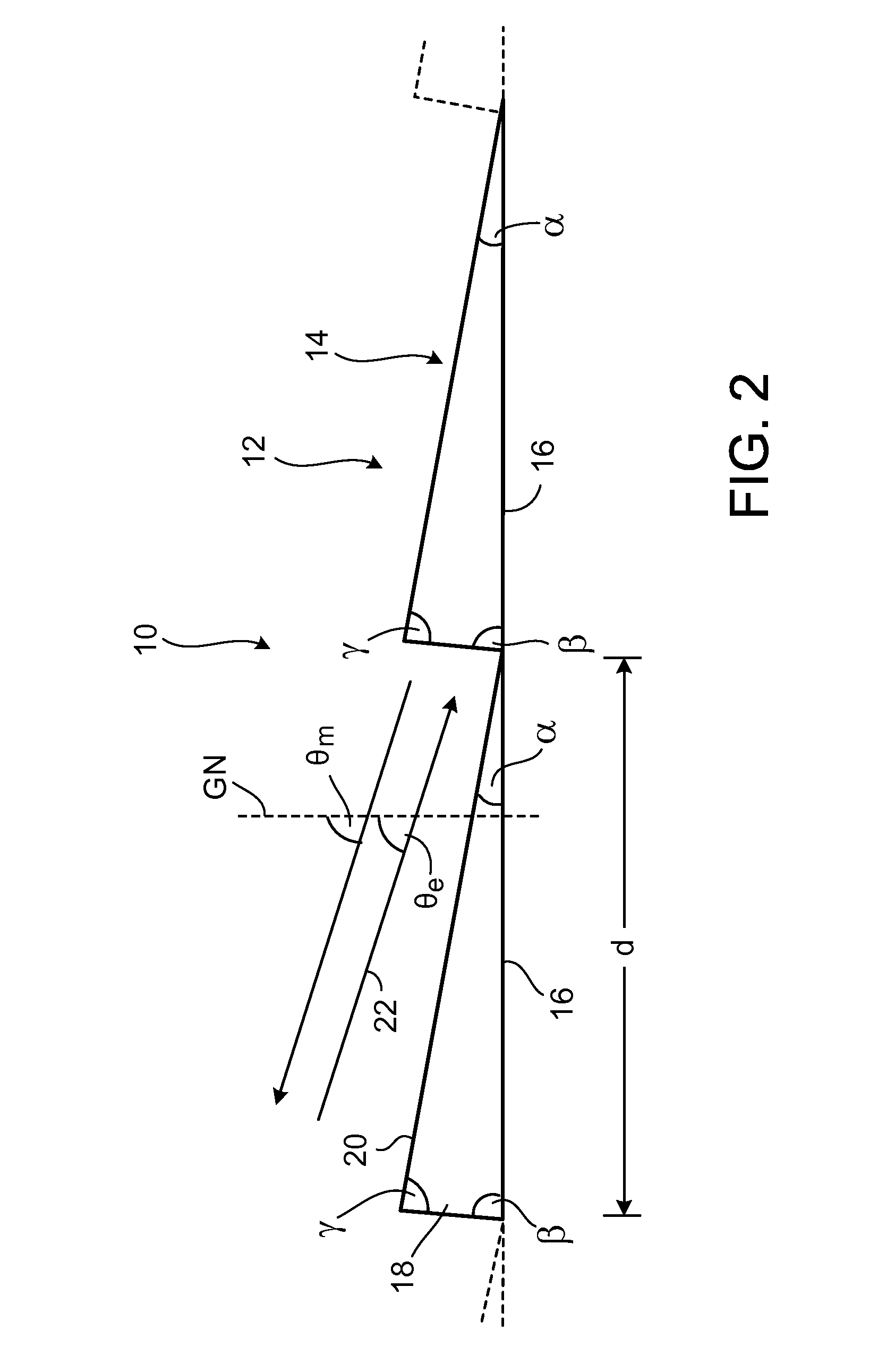Optical arrangement, method of use, and method for determining a diffraction grating
a technology applied in the field of optical arrangement and diffraction grating, can solve the problems of steep drop in the efficiency of response of the diffraction grating in the selected configuration, the paper's validity loss of te polarization theorem, and the failure to display a perfect blaze effect of the diffraction grating, etc., to achieve the effect of improving the blaze
- Summary
- Abstract
- Description
- Claims
- Application Information
AI Technical Summary
Benefits of technology
Problems solved by technology
Method used
Image
Examples
Embodiment Construction
[0067]Before the present disclosure is considered in detail, the prior art is firstly described briefly once more with reference to FIG. 1, in order to emphasize the differences and advantages of the present disclosure by comparison with the prior art with the aid of this description.
[0068]The first step to this end is to consider an example which is described in the document U.S. Pat. No. 6,067,197. In a first case, the incident light beam 112 in accordance with FIG. 1 contains light of a wavelength λ of 248.4 nm, which is emitted by a KrF laser. In a second case, the light beam 112 with a wavelength λ of 193.3 nm is emitted by an ArF laser.
[0069]It was found in U.S. Pat. No. 6,067,197 that the 84th diffraction order (m=84) in the case of the KrF laser, and the 108th diffraction order (m=108) in the case of the ArF laser, simultaneously constitute a blaze order when the grating width d of the diffraction grating 102 is 10.623 μm and the angle β of the blaze flanks 108 to the base s...
PUM
 Login to View More
Login to View More Abstract
Description
Claims
Application Information
 Login to View More
Login to View More - R&D
- Intellectual Property
- Life Sciences
- Materials
- Tech Scout
- Unparalleled Data Quality
- Higher Quality Content
- 60% Fewer Hallucinations
Browse by: Latest US Patents, China's latest patents, Technical Efficacy Thesaurus, Application Domain, Technology Topic, Popular Technical Reports.
© 2025 PatSnap. All rights reserved.Legal|Privacy policy|Modern Slavery Act Transparency Statement|Sitemap|About US| Contact US: help@patsnap.com



